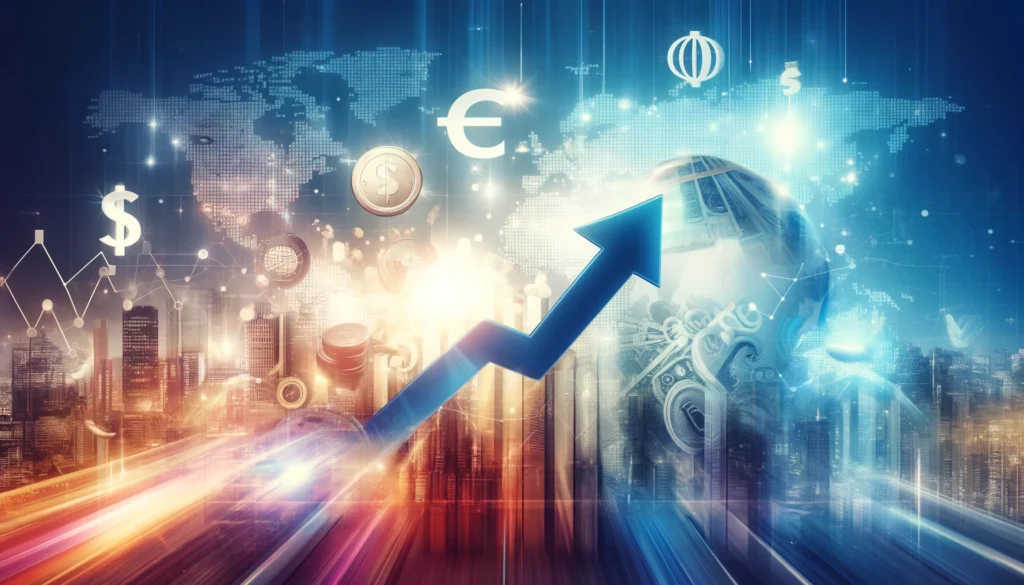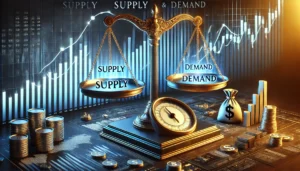
All What You Must Know About Economic Inflation

Introduction to Economic Inflation
Economic inflation is a term we often hear, but its nuances and implications are less understood. Inflation refers to the rate at which the general level of prices for goods and services rises, eroding purchasing power. This phenomenon affects every aspect of the economy, from consumer spending to business investments and government policies.
How Does Inflation Happen?
Inflation occurs when there’s an increase in the money supply without a corresponding growth in economic output. This can happen due to various factors. One common cause is excessive printing of money by governments, often to finance spending without raising taxes. When more money chases the same amount of goods, prices naturally rise.
Why Does Inflation Happen?
Several factors contribute to inflation. Demand-pull inflation happens when demand for goods and services exceeds supply, leading to higher prices. Cost-push inflation occurs when the costs of production increase, causing producers to raise prices to maintain profit margins. Additionally, built-in inflation arises when businesses and workers expect future inflation and adjust prices and wages accordingly.
When Does Inflation Occur?
Inflation can occur at any time but is often linked to economic cycles. During periods of economic growth, increased demand can push prices up. Conversely, during recessions, inflation may slow as demand weakens. However, external shocks, such as oil price spikes or supply chain disruptions, can trigger inflation regardless of the economic cycle.
Is Inflation Good or Bad?
Inflation is a double-edged sword. Moderate inflation is generally seen as a sign of a healthy economy, indicating that demand is growing. It encourages spending and investment, as consumers and businesses expect prices to rise. However, high inflation erodes purchasing power, creating uncertainty and reducing the real value of money.
The Benefits of Controlled Inflation
Controlled inflation, typically around 2-3% annually, is beneficial. It helps reduce the real burden of debt, making it easier for borrowers to repay loans. It also prevents deflation, a harmful decrease in prices that can lead to decreased economic activity and increased unemployment. Central banks aim to maintain this balance to foster economic stability.
The Dangers of High Inflation
High inflation, however, can wreak havoc on the economy. It reduces the purchasing power of money, making everyday goods and services more expensive. This can lead to a cost-of-living crisis, where wages do not keep pace with rising prices. It also creates uncertainty, discouraging long-term investment and savings.
Case Study: Hyperinflation in Zimbabwe
A prime example of the dangers of high inflation is Zimbabwe in the late 2000s. Hyperinflation peaked in November 2008, with a staggering inflation rate of 79.6 billion percent per month. This was largely due to excessive money printing to finance government deficits. The result was a complete collapse of the economy, where prices doubled every 24 hours, and the local currency became worthless.
Case Study: Moderate Inflation in Germany
Germany, on the other hand, provides a case study of controlled, moderate inflation. Post-reunification in the 1990s, Germany faced significant economic challenges. However, through prudent fiscal policies and a strong commitment to price stability, Germany maintained a moderate inflation rate. This helped ensure economic growth while keeping purchasing power stable, proving that controlled inflation can coexist with economic health.
Case Study: The 1970s Stagflation in the United States
The United States experienced a unique case of stagflation in the 1970s, a combination of high inflation and high unemployment. This was triggered by a series of oil price shocks, which increased production costs across the economy. Despite stagnant economic growth, prices kept rising, creating a challenging economic environment. The Federal Reserve’s eventual tightening of monetary policy, though painful, helped bring inflation under control by the early 1980s.
Case Study: Japan’s Deflation in the 1990s
Contrastingly, Japan’s experience in the 1990s highlights the dangers of deflation. After an asset price bubble burst, Japan fell into a deflationary spiral, with falling prices and stagnant economic growth. This period, known as the “Lost Decade,” showed that while inflation can be harmful, deflation can be equally damaging by creating a cycle of reduced consumer spending and investment.
Can We Avoid Inflation?
Completely avoiding inflation is neither possible nor desirable. Some inflation is necessary for economic growth and stability. However, extreme inflation can be mitigated through sound economic policies. Central banks play a crucial role in this, using tools like interest rate adjustments and monetary policy to control money supply and demand.
When Is Inflation a Good Sign?
Inflation can be a good sign when it indicates a growing economy. Moderate inflation shows that consumers are spending, businesses are investing, and overall economic activity is increasing. This kind of inflation supports job creation and wage growth, fostering a positive economic environment.
When Is Inflation a Bad Sign?
Inflation becomes a bad sign when it is too high or uncontrollable. High inflation erodes savings, reduces the real income of households, and increases the cost of borrowing. It can also lead to a vicious cycle of rising prices and wages, making it difficult for economies to stabilize. In extreme cases, it can lead to social unrest and economic collapse.
The Role of Central Banks in Controlling Inflation
Central banks, like the Federal Reserve in the U.S., are tasked with controlling inflation. They use monetary policy tools, such as adjusting interest rates and regulating money supply, to keep inflation within a target range. By raising interest rates, central banks can cool down an overheated economy, reducing inflationary pressures.
How Consumers Can Protect Against Inflation
Consumers can protect themselves from inflation by investing in assets that typically increase in value over time, such as real estate or stocks. Diversifying investments helps spread risk. Additionally, seeking wages that keep pace with inflation ensures that purchasing power remains stable.
The Global Impact of Inflation
Inflation is not just a national issue; it has global implications. High inflation in one country can affect international trade and investment. For instance, if a country’s currency devalues due to inflation, its exports become cheaper and more competitive globally, while imports become more expensive.
Conclusion: Navigating the Complexities of Inflation
Understanding inflation is crucial for both policymakers and consumers. While some inflation is beneficial, ensuring it remains controlled is essential for economic stability. By employing effective monetary policies and making informed personal financial decisions, the negative impacts of inflation can be mitigated, fostering a healthy economic environment.
By addressing these key aspects of inflation, this article aims to provide a comprehensive understanding of its causes, effects, and implications, helping readers navigate this complex economic phenomenon.
This expanded version should now be closer to the target length, with the addition of relevant case studies and more detailed explanations.
Read Also: Airbus, The interesting story of the European aircraft manufacturer




4 thoughts on “The Economic Inflation: All What You Must Know”